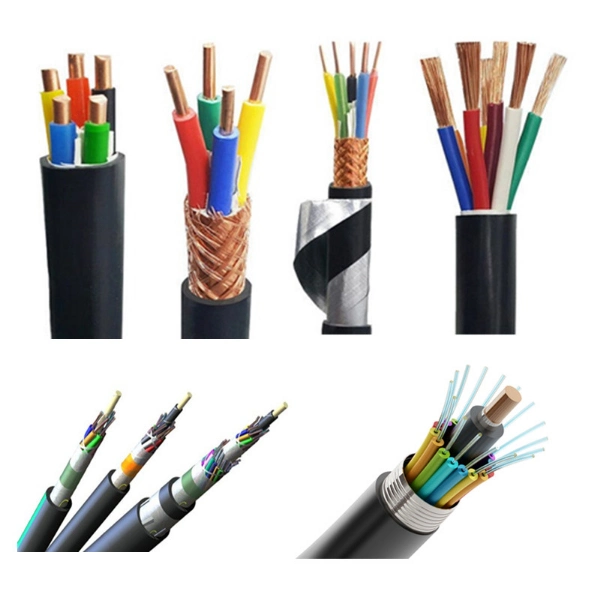Basic Info.
Model NO.
Fiber Optic cable
Kind
Autofocus Lens
Certification
RoHS, ISO9001: 2000
Feature
Waterproof / Weatherproof, High Definition
Effective Distance
≧30m
Sensor Size
1/3 inch
Remote Control
Without Remote Control
Pressure
More Than 10MPa
Power
AC 220V50Hz, DC 12V±5%, 24V Optional
Storage
SD Card, Standard 8g SD Card, 32g Optional
Cable Tensile Strength
250kgs
Probe
Optical Fiber Logging Cable for Oilfield Electrica
Light
Optical Fiber Logging Cable for Oilfield Electrica
Resolution
Optical Fiber Logging Cable for Oilfield Electrica
Viewing Angle
Optical Fiber Logging Cable for Oilfield Electrica
Transport Package
Wooden Box
Specification
Optical Fiber Logging Cable for oilfield Electrica
Trademark
GOLD
Origin
China
Production Capacity
200PCS/Month
Product Description
Optical Fiber Logging Cable for oilfield Electrical Cable Well Logging Cable Geophysical Cable 516 ( 8.18 mm ) logging cable

Function of the Optical Fiber Logging Cable
In the 1970s, during the application of optical fibers, it was discovered that when the optical fiber as an optical carrier is affected by the external environment (such as temperature, pressure, vibration, etc.), it will cause the intensity, phase, frequency, and polarization state of the transmitted light to change. Wait for the light wave parameter to change. Therefore, the corresponding environmental physical quantities can be obtained by measuring the changes of these parameters, thus realizing the optical fiber sensing.
Therefore, when using optical fiber for sensing, the optical fiber itself is not only a light-guiding medium, but also a sensitive element.

After entering the 21st century, distributed optical fiber sensing has obtained a lot of research in the field of oil and gas, and has also carried out experiments and applications in multiple scenarios, and achieved many gratifying results.
(1) DAS technology is used to acquire vertical seismic profile-VSP. Compared with the conventional VSP method, DAS-VSP has the advantages of high-efficiency and low-cost acquisition of full-well section distribution, dense sampling, and can overcome the disadvantages of conventional downhole geophones with limited temperature resistance.
(2) DAS technology is also used in near-surface surveys. Long-distance optical fibers are deployed in near-surface and shallow wells, excited by artificial seismic sources, and near-surface modeling is performed using the collected surface waves and reflected waves.
(3) DAS and DTS deployed in deep wells or seabeds can also be used for long-term dynamic monitoring of the reservoir development process. Time-lapse seismic observation based on permanently deployed DAS has also achieved good application results.
(4) The DAS deployed in the well can be used for hydraulic fracturing microseismic monitoring.
(5) DTS-based fracturing fluid monitoring and gas production profile measurement also have good application effects.
In addition, distributed optical fiber sensing also has wide application potential in monitoring cementing effect and wellbore integrity, as well as injection and production in the production stage of oil and gas reservoirs.

Technical specification of the cable:
| Construction | |
| Copper Construction | 19×0.37 mm |
| Insulation | 2.85 mm |
| Protection ETFE | 3.81mm |
| Special Armor(Inner) | 12×1.11 mm(1600N) |
| Outer | 18×1.11 mm(1600N) |
| Physical | |
| Cable Diameter) | 8.00mm±0.10mm |
| Cable Weight in Air | 281 kg/km |
| Temp Rating | 232 ºC |
| Mechanical | |
| Cable Breaking Strength | 40 kN |
| Minimum Shave Diameter | 450 mm |
| Cable Stretch Coefficient | 1.35 m/km/5kN |
| Electrical | |
| Voltage Rating | 1500 VDC |
| Insulation Resistance | 15000 MΩ·km |
| Resistance Typical | 9.2 Ω/km |
| Capacitance @ 1 kHz | 190 pf/m |
Optical Fiber Logging Cable for oilfield Electrical Cable Well Logging Cable Geophysical Cable 516 ( 8.18 mm ) logging cable
